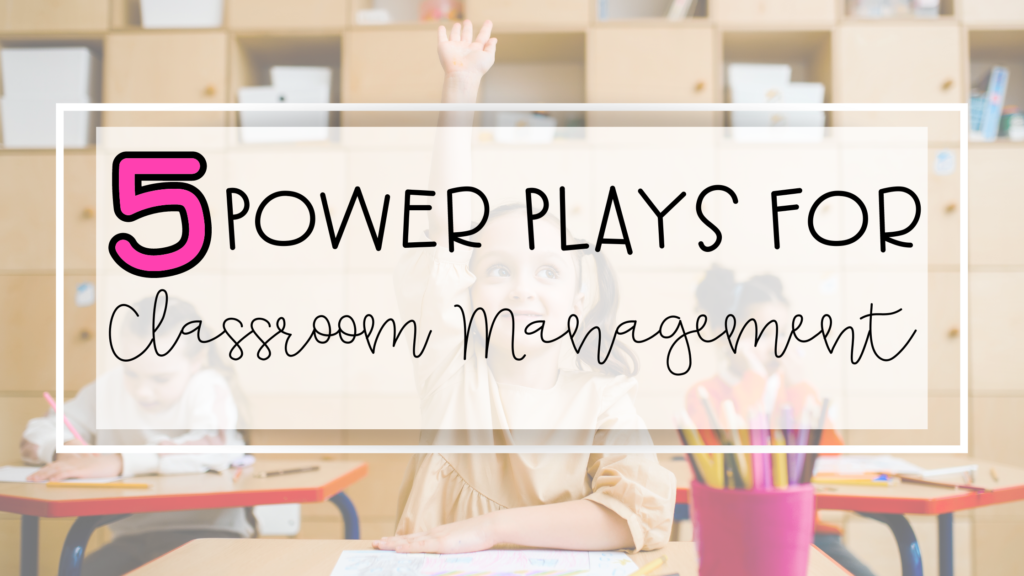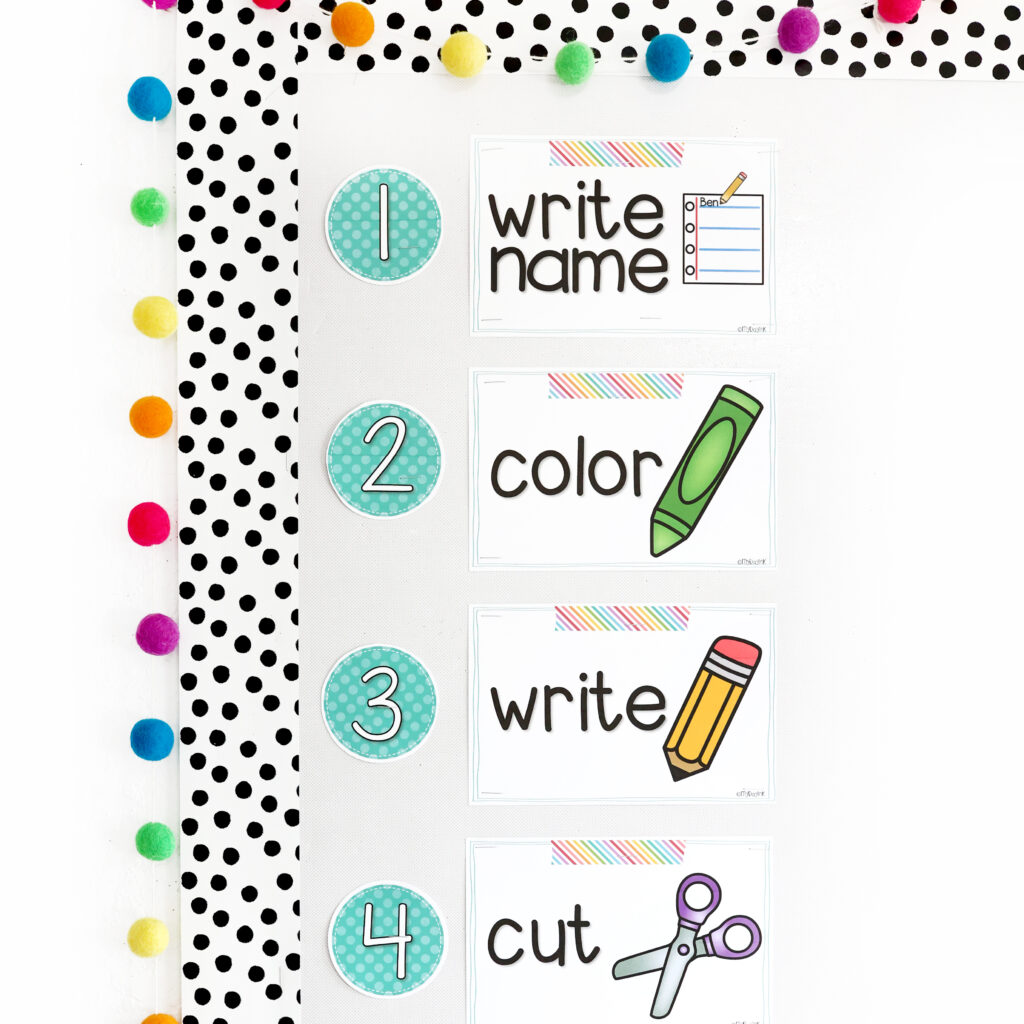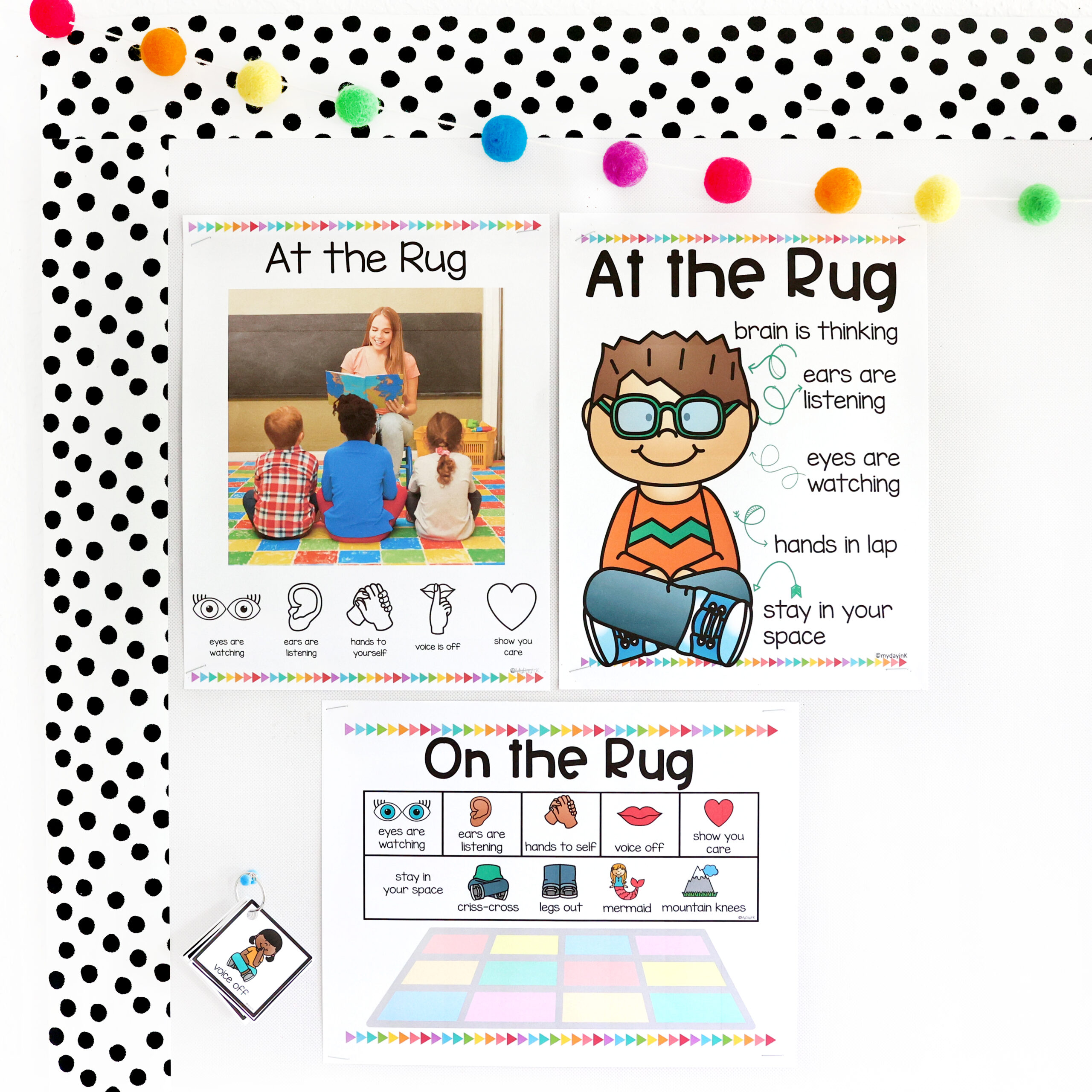Classroom Management for First-Year Teachers: 5 Power Plays
Starting your first teaching job can feel like diving into the deep end without your floaties. On my first day of school as a new teacher, standing in front of a group of students, I was super excited but also absolutely terrified. I had all my lesson plans ready, but as soon as the day started, I quickly realized that classroom management would be one of my biggest challenges. Disruptive behavior, group work chaos, and managing individual students’ needs seemed overwhelming. However, over time, I discovered five main power plays that made classroom management for first-year teachers easier and helped me feel more comfortable and effective in the classroom.

5 Power Plays for Classroom Management for First-Year Teachers
These five power plays will help make classroom management for first-year teachers easier and give you the confidence to create a positive learning environment in your classroom.
Power Play #1: Use Visual Aids Daily
Visual aids are a lifesaver for new teachers. They can help set clear expectations and guide student behavior in a fun way. Use visuals like charts, daily schedules, and hand signals to communicate classroom rules and routines. Visuals are particularly useful for young students and those with special education needs, helping them understand what’s expected without needing constant verbal reminders.
Power Play #2: Be Concise and Explicit with Language
Be direct and to the point when giving instructions or addressing inappropriate behavior. Clear expectations and concise language help prevent misunderstandings and keep students focused. For example, instead of saying, “Can everyone please start cleaning up their desks now?” say, “It’s time to clean up your desks.” This straightforward approach can make a big difference in classroom behavior and help maintain a well-managed classroom.
Power Play #3: Be Consistent in Your Routines and Practice
Consistency is key when it comes to effective classroom management. Establishing routines at the beginning of the school year and sticking to them helps students know what to expect, reducing anxiety and disruptive behavior. Practice these routines daily until they become second nature to your students. Whether it’s how to line up, transition between activities, or participate in group work, consistent routines create a strong foundation for a positive classroom environment.
Power Play #4: Celebrate Success
Celebrate when your students meet expectations, no matter how small the achievement. Positive reinforcement comes in a variety of different options. A classroom cheer, punch cards, or a fun brain break can go a long way in promoting good behavior. Recognizing success creates a sense of ownership and pride in students. It encourages them to continue meeting classroom expectations and contributing to a positive learning environment.
Power Play #5: Embrace Repetition
Practice makes perfect! Embrace repetition in teaching and managing your classroom. Repeating instructions, routines, and positive behavior practices helps reinforce them. Don’t be afraid to revisit your classroom management plan and adjust as needed. Over time, repeating these practices will lead to a well-managed classroom and effective instruction.
Want even more information about the 5 POWER PLAYS above? Well, you’re in luck. I’ve created a FREE video email series to help get you started on your classroom management journey! CLICK HERE.
Classroom management for first-year teachers doesn’t have to be overwhelming. By using visual aids, being concise, maintaining consistent routines, celebrating successes, and embracing repetition, you can create a positive classroom environment. As well as build strong relationships with your students. These strategies will help you navigate the first weeks of school and beyond. Easily setting you up for success throughout your first year of teaching. Remember, even the little things can make a big difference. You’ve got this!



